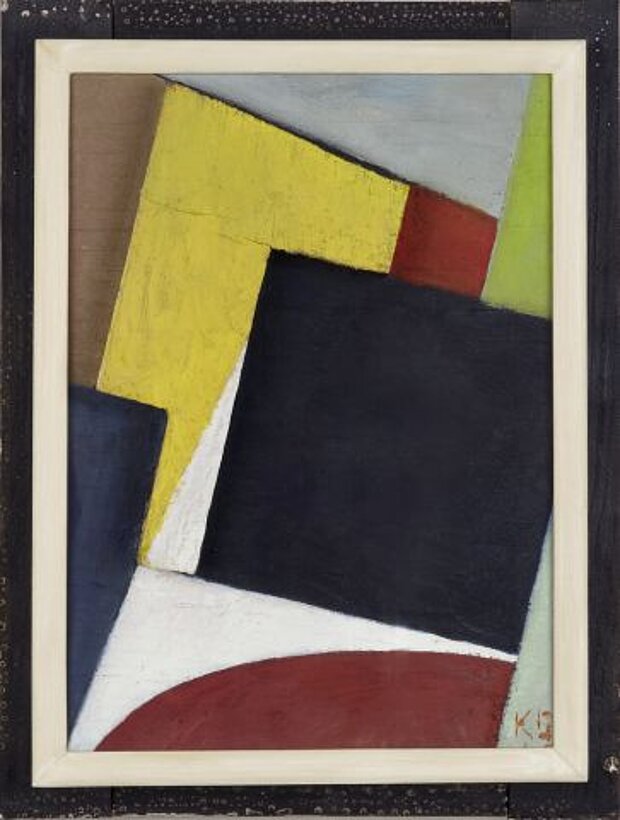
Schwitters, Kurt
Ohne Titel (Gut aufgelegt)
Untitled (Gay Mood)
1944

© mumok
| Object description | Oil and wood, nailed on wood |
|---|---|
| Object category | image |
| Material |
Object:
wood
Painting layer:
oil paint
Support:
wood
|
| Technique |
Object:
collage
|
| Dimensions |
object size:
height: 34,5 cm,
width: 25,5 cm,
depth: 6,5 cm
frame dimension:
height: 51 cm,
width: 43 cm,
depth: 10 cm
|
| Year of acquisition | 1962 |
| Inventory number | B 69/0 |
| Creditline | mumok - Museum moderner Kunst Stiftung Ludwig Wien |
| Rights reference | Gemeinfrei | public domain |
| Further information about the person | Schwitters, Kurt [GND] |
| Literature |
Laboratorium Moderne/Bildende Kunst, Fotografie und Film im Aufbruch Genau und anders :Mathematik in der Kunst von Dürer bis Sol LeWitt |
“Everything was ruined, the task was to build something new out of the rubble,” wrote Kurt Schwitters in 1918 at the end of the First World War. In “Gut Gelaunt [In a Good Mood]” from 1944 Kurt Schwitters assembled pieces of wood painted in oil colours on top of one another. In this way a colourful relief was created, a layered assemblage. The design principle is based on composing and fitting together very differing materials. He combined everyday objects and waste materials, so-called “object trouvés”, with painted canvas and other similar items. Following the Dadaist approach to image making, Kurt Schwitters called the collages and reliefs he had been making since around 1919 “Merz”. The word was a fragment of an advert for “Kommerz und Privatbank” in a collage and has (phonetic) associations with “Kommerz [Commerce]”, “ausmerzen [eradicating]”, “Scherz [joke]”, “Nerz [mink]”, “Herz [heart]” and the März, month of March, that stands for the beginning of spring. Schwitters transposed the construction principles of the Merz pictures and Merz collages in a Merz room which he worked on for twenty years starting in1923. You can now see a picture of a reconstruction of it on your screen. Schwitters called the way he dealt with found materials and their combination “Entformung [de-formation]”. His artistic goal was a Gesamtkunstwerk that had the characteristic of dissolving the boundaries between separate art genres but also that between art and the everyday world. The central motif of the relief is reminiscent of Kasimir Malewitsch: a black square, though in the case of Schwitters it is tilted, intersecting with the frame and surrounded by colourful forms. The dynamic structure of “Gut Gelaunt” negates and ironically breaks the strictness of Malewitsch’s “Black Square on White Ground”. The colouring and composition of the relief indicates the influence of the Netherlands artist group “De Stijl” as well as elements of the post 1931 successor artist group “abstraction – creation” of which Kurt Schwitters was a member. This group, which at times had up to four hundred members, was a forum for artists that had a significant impact on the public and aimed at implementing the formal language of concrete constructivist and geometrical design principles.
© mumok – museum moderner kunst stiftung ludwig wien